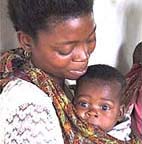|
||||

Credits and Copyright
|
|
|
|
Fourth GAVI Board Meeting, Noordwijk, The Netherlands, 19 November 2000 Improved immunization systems, products and technologies: GAVI project development agendas Dr Mark Kane, the Gates Children’s Vaccine Program at PATH, presented a proposal (Word – 40k) from the Working Group to use the current GAVI structure to develop a team approach to addressing the GAVI research priorities. The Board: 4.1 Approved the basic principles outlined in the paper, confirming that current efforts to help countries introduce new and under-used vaccines and increase basic immunization coverage should remain GAVI’s top priorities, and that human resources should not be shifted away to satisfy new research agendas. 4.2 Endorsed the priority project areas as identified:
4.3 Urged the Working Group to work with the appropriate task forces and consult with those in the public and private sectors already engaged in the three vaccine-related project areas to identify:
4.4 Endorsed the proposed steps the task forces need to take immediately in order to contribute their expertise to vaccine-related project development agendas. 4.5 Requested the Working Group and the task force(s) concerned to jointly report back to the Board regarding the development of project organization and financing, before the next Board meeting (June 2001). 4.6 Accepted the responsibility of reviewing the refined project agendas approving fully developed proposals for implementation. 4.7 Recommended that the Vaccine Fund use sub-account 3 to address the specific bottlenecks constraining the rapid development and availability of priority products or technologies. If approved by the Fund Board, the Working Group would work closely with the Executive Committee of the Fund to develop the criteria for drawing on sub-account 3.
|
|
|
Contact GAVI | Guestbook | Text version | Credits and Copyright |
|
